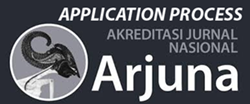Expression of Disappointment Emotions in 1-3 Year Old Children in Psycholinguistic Studies
DOI:
https://doi.org/10.59653/ijmars.v2i03.997Keywords:
disappointment, children, psycholinguistics, phonology, syntaxAbstract
This study uses a psycholinguistic approach to examine how children aged between one and three years old show disappointment. The study aims to find, examine and characterize the words or phrases used by children to express disappointment. The approach used is a descriptive qualitative analysis based on phonological and syntactic theories of child language acquisition. Naturally, conversational data were collected by documenting the events that made children feel disappointed. The findings of the analysis showed that children often used nonverbal cues such as roaring, shouting, and crying along with explanations to convey their dissatisfaction. Children aged 1 year and 4 months have only learned verbs and nouns at the syntactic level. Two-year-olds can say two words classified as verbs, nouns, pronomina and negative phrases. Children between two and nine years old can say two nouns, verbs, adjectives, or adverbs.
Downloads
References
. N. (2023). Swear Language Among Students in Three Universities in Makassar, Indonesia: A Psycholinguistic Study. International Journal of Membrane Science and Technology, 10(2). https://doi.org/10.15379/ijmst.v10i2.3352
Chaer, Andul. 2009. Psikolinguistik: Kajian Teoritik. Jakarta: Rineka Cipta
Fridani, L. (2014). Hakikat Perkembangan Bahasa. Metode Pengembangan Bahasa. Jakarta: Universitas Terbuka
Guasch, M., Boada, R., Ferré, P., & Sánchez-Casas, R. (2013). NIM: A Web-based Swiss army knife to select stimuli for psycholinguistic studies. Behavior Research Methods, 45(3). https://doi.org/10.3758/s13428-012-0296-8
Kaczmarek, B. L. J. (1999). Extension of Luria’s psycholinguistic studies in Poland. In Neuropsychology Review (Vol. 9, Issue 2). https://doi.org/10.1023/A:1025607823933
Mahmasoni, M. S. (2023). Efisiensi Hafalan Al-Qur’an dalam Pendidikan Islam di Indonesia sebagai Strategi Pembelajaran Bahasa Arab Usia Dini:(Prespektif Psikolinguistik). Jurnal Penelitian Agama, 24(1), 63–70
Mulyani. (2020). Praktik Penelitian Linguistik. Yogyakarta: CV Budi Utama
Natsir, N. (2017). Hubungan psikolinguistik dalam pemerolehan dan pembelajaran bahasa. Jurnal Retorika, 10(1), 20–29
Riyanto, S. (2012). Dutch-Indonesian interlanguage Psycholinguistic study on syntax. Wacana, Journal of the Humanities of Indonesia, 14(1). https://doi.org/10.17510/wjhi.v14i1.54
Sakka, W., Nasmilah, N., Khan, A., Mumu, S., & Hamidi, B. (2022). Interplay of Teacher Talk and Learners’ Motivation in Learning English: A Psycholinguistic Study. Education Research International, 2022. https://doi.org/10.1155/2022/9099268
Setyawan, C. E., dan Taufik, A. (2019). Berbahasa, Berfikir Dan Proses Mental Dalam Kajian Psikolinguistik. Jurnal Pendidikan Bahasa Arab Dan Kebahasaaraban, 108.
Suharti, S., Hum, S., Khusnah, W. D., Sri Ningsih, S. S., Shiddiq, J., Saputra, N., Heri Kuswoyo, S. S., Jalal, N. M., Dhari, P. W., & Ratna Susanti, S. S. (2021). Kajian Psikolinguistik. Yayasan Penerbit Muhammad Zaini
Sulistyowati, H. (2021). Language Skills Of Deaf Children At Jombang State Exceptional School. Jurnal Disastri: Pendidikan Bahasa Dan Sastra Indonesia, 3(2), 90–96
Sutrisna, D. (2018). Analisis Kesalahan Morfologi Bahasa Indonesia dalam Surat Kabar Radar Majalengka Edisi 16 dan 25 April 2016. Diglosia, 1(2), 64–73
Szekely, A., Jacobsen, T., D’Amico, S., Devescovi, A., Andonova, E., Herron, D., Lu, C. C., Pechmann, T., Pléh, C., Wicha, N., Federmeier, K., Gerdjikova, I., Gutierrez, G., Hung, D., Hsu, J., Iyer, G., Kohnert, K., Mehotcheva, T., Orozco-Figueroa, A., … Bates, E. (2004). A new on-line resource for psycholinguistic studies. Journal of Memory and Language, 51(2). https://doi.org/10.1016/j.jml.2004.03.002
Umrati dan Wijaya, H. (2020). Analisis Data Kualitatif Teori Konsep dalam Penelitian Pendidikan. Makassar: Sekolah Tinggi Theologia Joffray
Downloads
Published
How to Cite
Issue
Section
Categories
License
Copyright (c) 2024 Mutiara Sany Hasibuan, Rosmawaty Harahap

This work is licensed under a Creative Commons Attribution-ShareAlike 4.0 International License.
Authors who publish with this journal agree to the following terms:
- Authors retain copyright and grant the journal right of first publication with the work simultaneously licensed under a Creative Commons Attribution-ShareAlike that allows others to share the work with an acknowledgement of the work's authorship and initial publication in this journal.
- Authors are able to enter into separate, additional contractual arrangements for the non-exclusive distribution of the journal's published version of the work (e.g., post it to an institutional repository or publish it in a book), with an acknowledgement of its initial publication in this journal.
- Authors are permitted and encouraged to post their work online (e.g., in institutional repositories or on their website) prior to and during the submission process, as it can lead to productive exchanges, as well as earlier and greater citation of published work (See The Effect of Open Access).
























